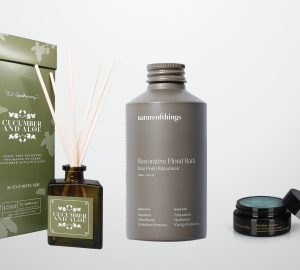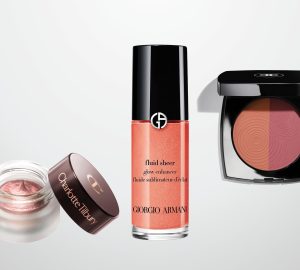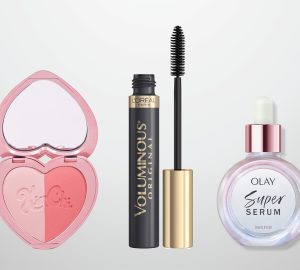With temperatures cooling off and people spending more hours indoors, it’s an ideal time to schedule cosmetic treatments to achieve a more youthful look. Area medical spas offer a variety of ways to hit the refresh button on different areas of your face. Professionals say it makes sense to have these treatments done while in-person social commitments are still on hold. And if you do need to go out, your face mask can help hide what’s healing.
lips, chin & jaw
Aeron Sheffield, RN, BSN, of Ethos Aveda Salon & Medspa says filler injections to enhance the lips, chin and jawline are popular at this time of year. “Holiday parties may be different this year, but people still want to look their best, and now is a good time to talk about using fillers to achieve it,” he says.
Sheffield says Restylane Kysse is a popular choice to enhance the lips. “It provides volume, hydration and a natural look,” he notes. Juvéderm Voluma works well for other parts of the face including the chin. “If you don’t have a prominent chin but you want that look, this filler may be a good choice,” he says.
He adds that because each client has unique skin and anatomical characteristics, it’s important to design a personalized plan for filler treatments. “We evaluate each person carefully and don’t recommend one-size-fits-all solutions,” he says.
For example, some people may need more touch-up visits than others. “Everyone has different areas of the face that are naturally more hollow or plump,” Sheffield says. “A person who has smaller lips might need a couple of additional treatments, then a reevaluation in a month or two. You don’t want to end up with a look that is not aesthetically pleasing.”
Sheffield says careful consultation with a professional provider is an important first step for those who are considering fillers. “We want to understand what clients are looking for ahead of time so we can achieve the desired result,” he notes.
nose & cheeks
Carol Anderson, RN, CANS, owner of Nouveau, a Boutique Medspa, says rosacea is a fairly common skin condition that is easy to treat at this time of year, when many people are staying inside anyway. “BroadBand Light (BBL) is a laser therapy that uses specific wavelengths of color to improve skin’s texture and color,” she notes. “It can reduce the redness and rash that rosacea patients experience on their cheeks and noses.”
A number of things can cause rosacea to flare up, so the condition needs to be managed regularly, according to Anderson. “BBL isn’t a cure, but it improves the skin significantly and produces anti-aging effects as well,” she says. “The light wakes up the skin cells and makes them function more youthfully.”
Anderson says BBL is a good option for rosacea because it only targets the skin cells that need treatment, not the surrounding area. “After your initial visit, you generally return every three to six months for follow-up therapy,” she says. “Treating the nose and cheek area usually takes about 15 minutes in the office, and we provide a numbing agent to make it comfortable.”
After a treatment, the client usually experiences a sensation like a light sunburn for a couple of hours. “At-home care usually includes a phyto corrective gel to reduce redness and warmth, and we advise the client to moisturize often,” Anderson notes. “We get a lot of positive feedback about BBL. People tell us they appreciate the combination of noticeable results and very little downtime.”
eyebrows
Microblading is a semipermanent tattoo procedure that can help people with thin or uneven brows achieve a fuller, more pleasing look, according to Courtney Christine Carr of Christine Brows. Clients first schedule a consultation with Carr so she can examine the eyebrow area, create an enhancement plan and answer any questions that arise.
The technique uses a special blade with fine needles arranged in a straight line. It is dipped into a pigment that is applied to the skin, penetrating the top three layers to create the look of new eyebrow hairs. Each client’s initial procedure consists of two sessions: First, the brows are mapped and color matched, and a set of foundation strokes is applied to the skin. Six to eight weeks later, the client returns for a touch-up visit to fill in any spaces and create a fuller look. After that, the procedure should be repeated every 6 to 12 months because of hair growth and skin cell turnover, Carr says.
She also educates each client about important pretreatment precautions like avoiding alcohol, caffeine and anti-inflammatory drugs for a period of time. Post-treatment care includes keeping the eyebrow area dry, applying a special balm and allowing any scabbing to fall off on its own.








